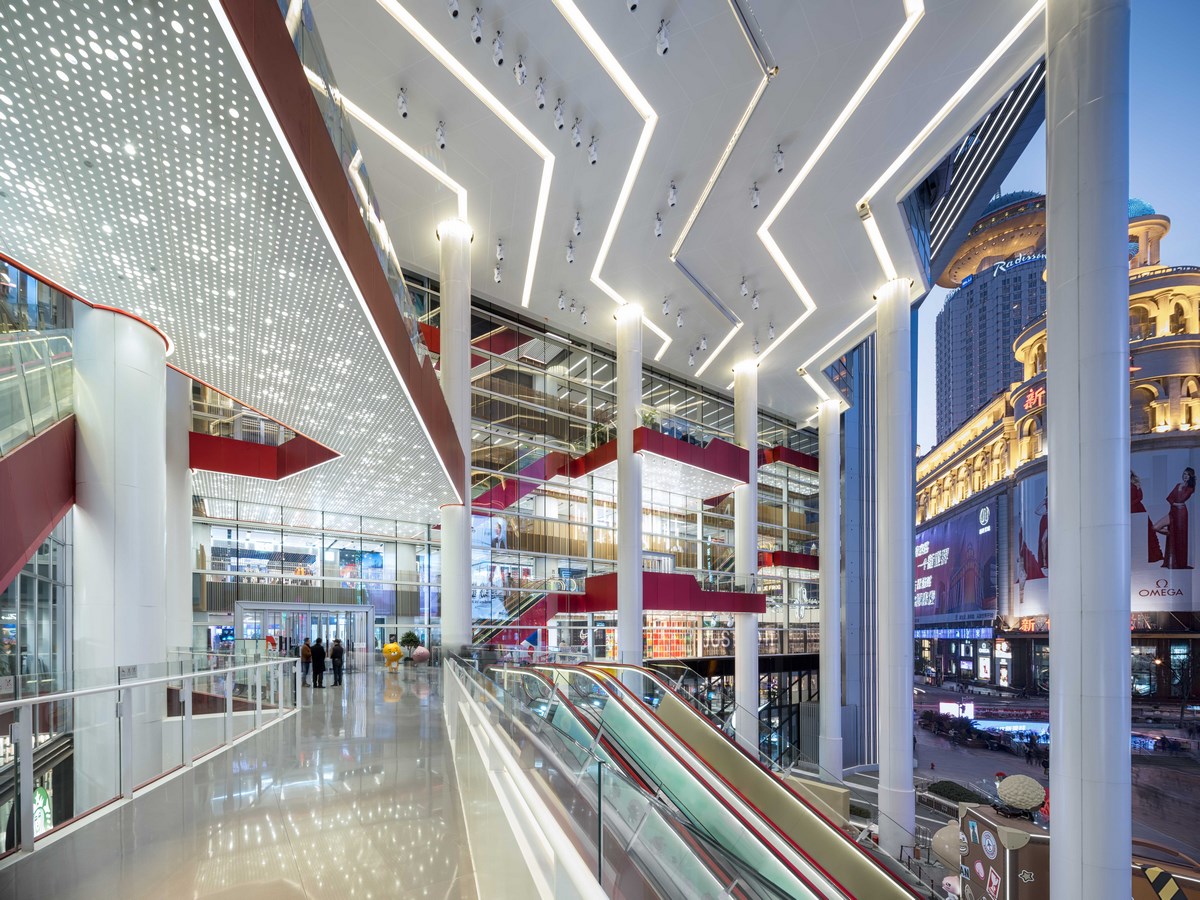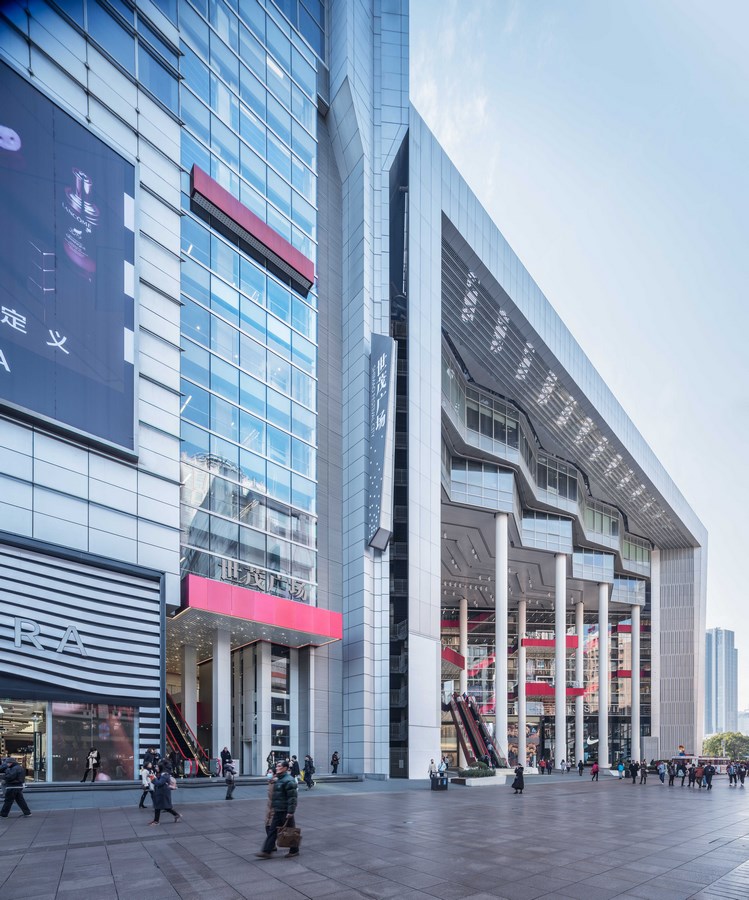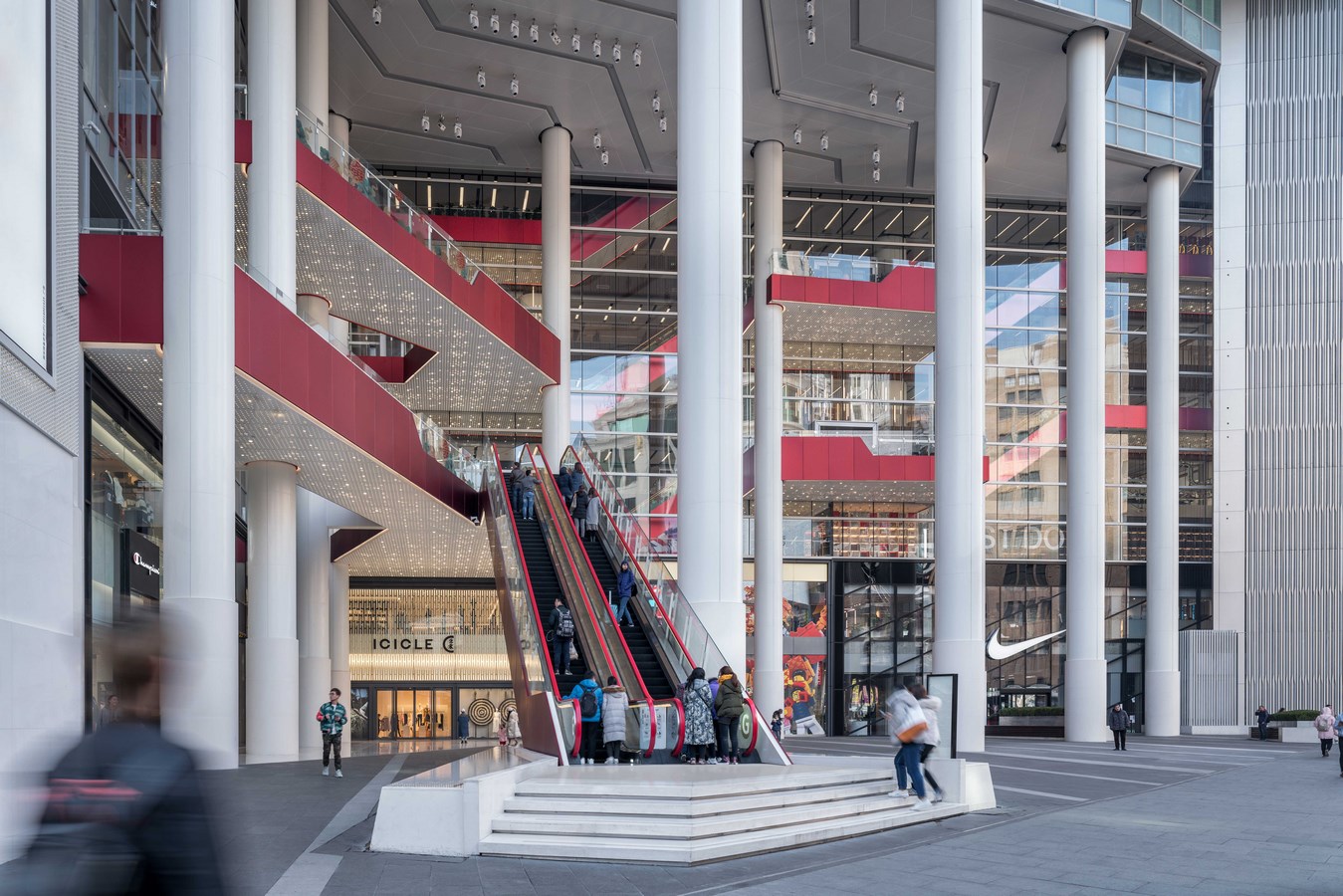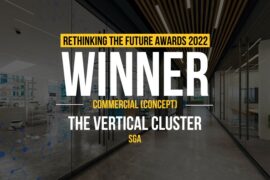After winning global acclaim for both K11 in Shanghai, as well as Beijing’s COFCO Plaza, Kokaistudios once again brings its expertise in shopping mall renovation to China’s increasingly lifestyle-driven retail scene. The firm’s recent renovation of Shimao Festival City in Shanghai illustrates this contemporary crossroads, and demonstrates how by expanding malls’ functionality and reconsidering circulation, these sizeable structures can be reabsorbed by the city as useful public spaces of engagement and exchange.
Project Name: Shanghai Shimao Festival City Renovation
Site: Shanghai, China
Type: Urban Renewal
Service Scope: Architecture Renovation+Interior Design
Design Time: 2016-2017
Completion Time: 2018
Site area: 13,800㎡
GFA: 58,000㎡
Design Company: Kokaistudios
Chief Architects: Andrea Destefanis, Filippo Gabbiani
Architecture Design Director: Li Wei
Architecture Design Team: Li Dongyin, Anna Maria Austerveil, Paz Taibo Eva Maria, Zheng Yong, Qin Zhantao, Guan Bohua, He Wenbin, Daniele Pepe
Interior Design Director: Rake Wang
Interior Design Team: Kasia, Huang Wanqian, Xu Xinjie
Photography: Wu Qingshan
Media Contact: Jacqueline Chiang
Email: Jacqueline@kokaistudios.com

Built in 2006, Shimao Festival City is a modern monument of Shanghai. Comprising retail, hotel and office space, it is located at the top of Shanghai’s famous East Nanjing Road shopping street, with views across nearby People’s Square. But despite its prime location the mall had fast become overlooked by residents in favor of venues more clearly aligned with their contemporary city lifestyle.

Kokaistudios was tasked with upgrading the pre-existing retail component of Shimao Festival City. By reconfiguring circulation both inside and outside the facility, identifying clear pathways according to visitor type, and creating openness and space, since renovations concluded in November 2018, the mall has helped reinvigorate a prime corner of Shanghai real estate. In doing so, it has placed the mall firmly on the radar of both residents as well as tourists, reconnecting it to the city.

Kokaistudios’ design concept is a theater and the renovation centers on visitor flow of three “roles” of users: tourists, audience and actors, with areas of the mall imagined as the foyer, auditorium, and backstage of a theater. Starting from outside, an external ‘red carpet’ guides visitors along a sky escalator extending from Nanjing Dong Lu to a third-floor balcony and podium entrance space. From here, visitors may access a second external escalator, taking them to another covered balcony on the fifth floor.

Tourists: Created primarily with tourists in mind, the red carpet guides visitors on an experiential journey. Effectively circumnavigating the mall proper, the “red carpet” offers impressive views across East Nanjing Road and People’s Square; they reinstate an original intention of the architecture itself, particularly with regard to its diagonal axis. It also sees the mall’s functionality expand to that of tourist attraction, reestablishing Shimao Festival City as a public space for enjoying all facets of Shanghai life – not just shopping.

In addition to softening the perimeter of the formerly enclosed mall, and physically reconnecting the architecture to its environs, the intervention repositions the mall’s focal point to its upper levels. Where previously access to the mall’s core was exclusively via its ground floor flagship stores, Kokaistudios’ solution transports visitors directly to its re-centred and newly opened-up third-floor ‘foyer’, bringing energy and movement to the facility’s formerly under-visited upper levels.
Audience: Positioning the mall as a lifestyle destination that extends beyond retail was also key to attracting a second target demographic: Shanghai residents, imagined here as ‘audience.’ For this reason, the renovated mall features several high-end restaurants and bars on its fifth and sixth floors. With this in mind, a newly created street-level entrance opens onto an attractive atrium: flanked with vertical wooden boards, seemingly extending the entirety of the mall’s height and interspersed with LED columns, it lends light, openness, and drama to what was previously an under-optimized space. From here, banks of elevators take diners directly to F&B outlets, without the need to navigate escalators.

Actors: Another entrance on East Nanjing Road caters to a third demographic, defined by Kokaistudios as ‘actors’ and imagined as those working in nearby offices. In order to facilitate frequent, more convenient use of Shimao Festival City, an escalator conveys this group direct to the heart of the mall. Envisaged as a ‘backstage’ space, it sets an industrial tone through grey louver walls, polished black glass. These elements combine to reinforce the space’s efficiency and purpose, and contrasts with the mall’s more tourist-oriented outer areas.
Kokaistudios’ project demonstrates how architectural renovation can serve cities by retrofitting outdated shopping malls with the lifestyle elements of now, and flexibility for the future. In this way, these large-scale structures can be absorbed back into the useful fabric of urban centers. In the case of Shimao Festival City, this translates to optimizing and opening-up a formerly overlooked space in the heart of Shanghai for the benefit, enjoyment and use of all.

Kokaistudios is an award winning architecture and interior design firm founded in 2000 in Venice by Italian architects Filippo Gabbiani & Andrea Destefanis. Headquartered in Shanghai since 2002 we have grown into multi-cultural firm of 60 people working on a global scale with projects in Asia, the Middle East, Europe and North America. Kokaistudios partners with our clients to collaboratively develop innovative & ground breaking projects in diverse fields of design. Primarily focused on developing cultural, corporate, commercial, hospitality & retail projects we have also worked extensively on urban regeneration projects involving the requalification of heritage locations. Kokaistudios aims to develop projects that add positively to the built environment and social fabric of the cities and countries in which they are located.
 Filippo Gabbiani Born in Venice, Italy, from a famous family of artists and glass makers, Filippo Gabbiani developed very early a multidisciplinary interest for art and design. Starting to cooperate with his family in designing and producing artistic glass he completed his studies at University of Architecture of Venice where he graduated with an innovative research sponsored by the European Community on usage of alternative energies in architecture. Following his instinctive curiosity for different disciplines and other cultures he worked in several European countries and in the U.S.A. cooperating with prestigious firms of architecture, interior and industrial design prior to the founding of Kokaistudios.
Filippo Gabbiani Born in Venice, Italy, from a famous family of artists and glass makers, Filippo Gabbiani developed very early a multidisciplinary interest for art and design. Starting to cooperate with his family in designing and producing artistic glass he completed his studies at University of Architecture of Venice where he graduated with an innovative research sponsored by the European Community on usage of alternative energies in architecture. Following his instinctive curiosity for different disciplines and other cultures he worked in several European countries and in the U.S.A. cooperating with prestigious firms of architecture, interior and industrial design prior to the founding of Kokaistudios. Andrea Destefanis Born in Turin, Italy from a family of theater artists, Andrea Destefanis developed very early a strong interest for visual arts and scenography. Growing up in a refined cultural environment he moved to live in Venice where completing his education at University of Architecture of Venice he started to cooperate with several architectural firms and developed award winning projects in architecture and city planning. Moved by his personal interest in different fields of design he founded a co-operative studio focused on research and developing early innovative architectural computer graphic design tools prior to the founding of Kokaistudios.
Andrea Destefanis Born in Turin, Italy from a family of theater artists, Andrea Destefanis developed very early a strong interest for visual arts and scenography. Growing up in a refined cultural environment he moved to live in Venice where completing his education at University of Architecture of Venice he started to cooperate with several architectural firms and developed award winning projects in architecture and city planning. Moved by his personal interest in different fields of design he founded a co-operative studio focused on research and developing early innovative architectural computer graphic design tools prior to the founding of Kokaistudios.If you’ve missed participating in this award, don’t worry. RTF’s next series of Awards for Excellence in Architecture & Design – is open for Registration.
Click Here





